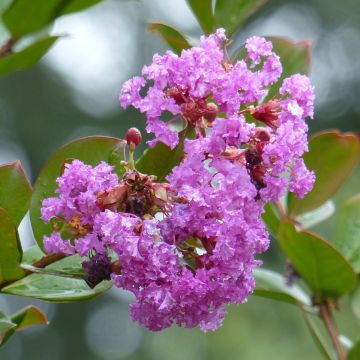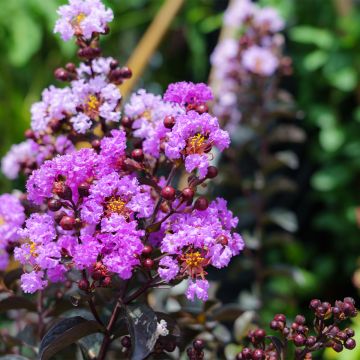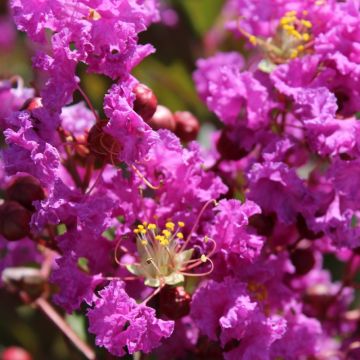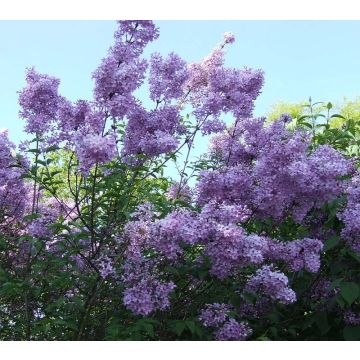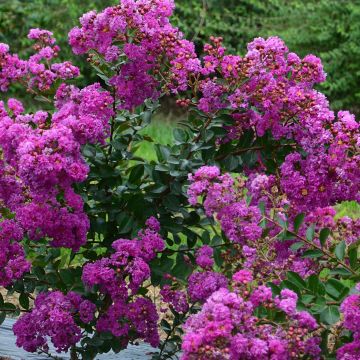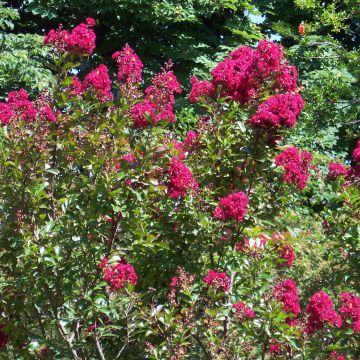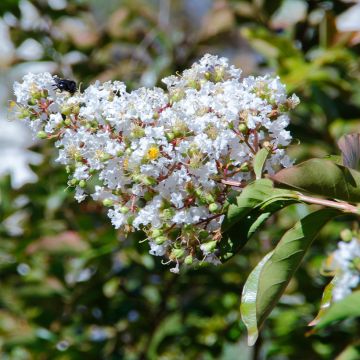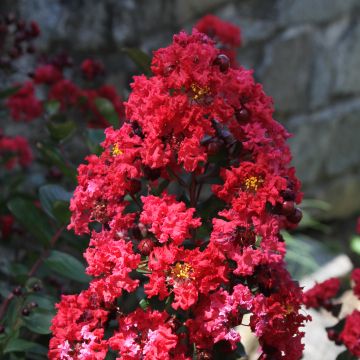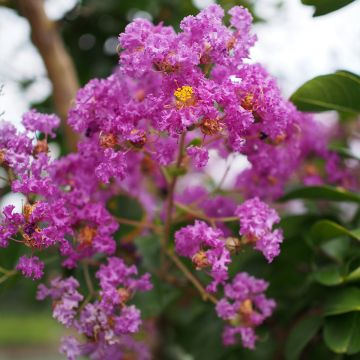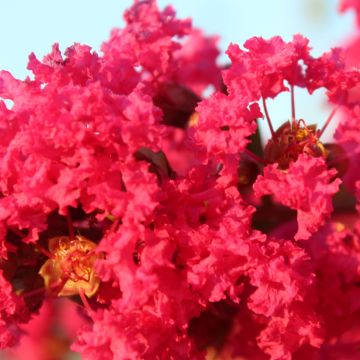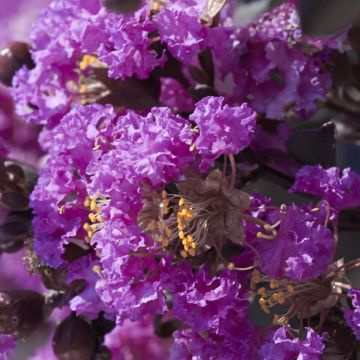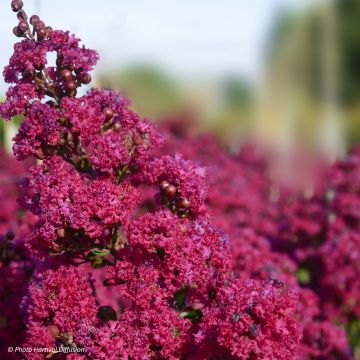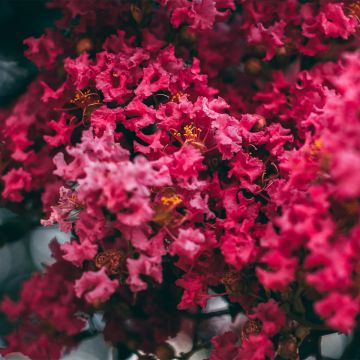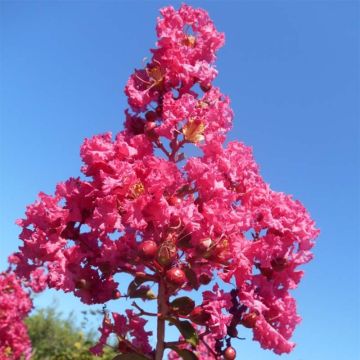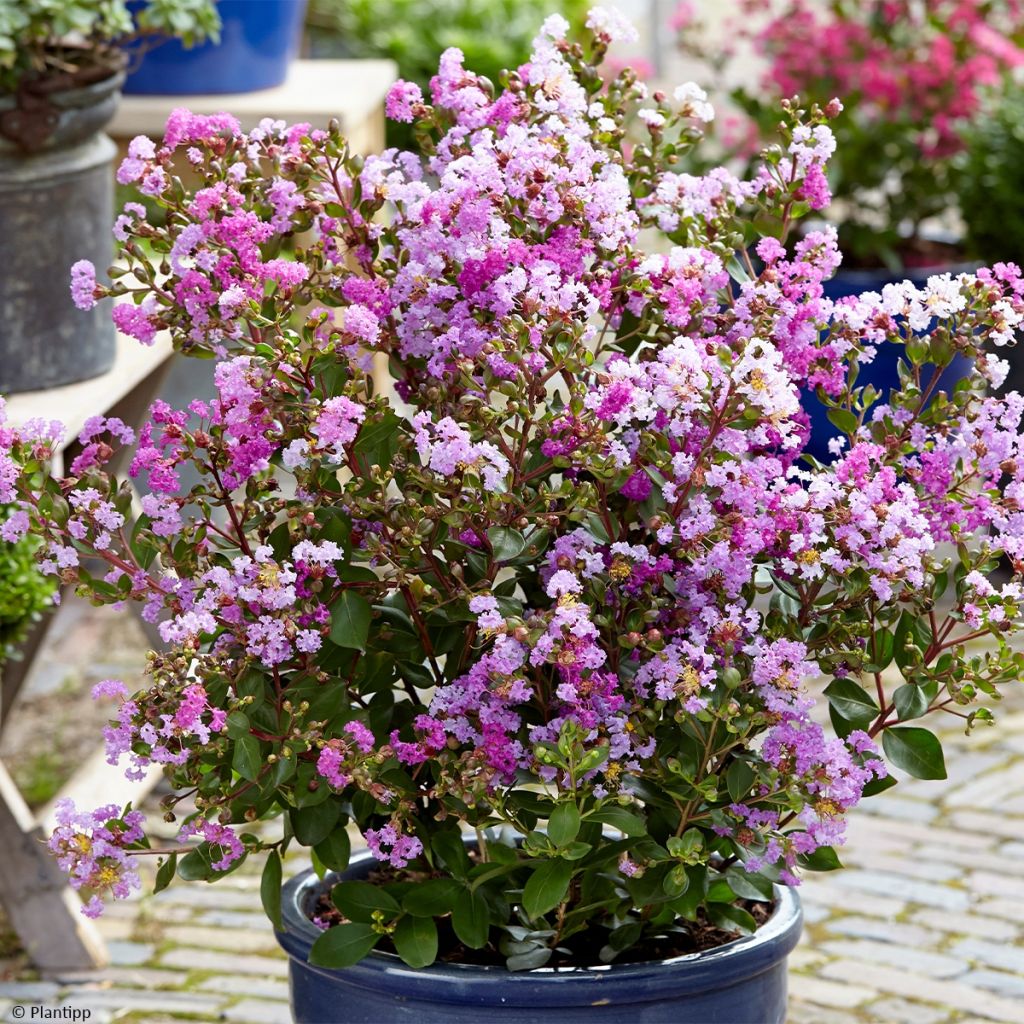

Lagerstroemia indica Eternal with Love - Crape Myrtle
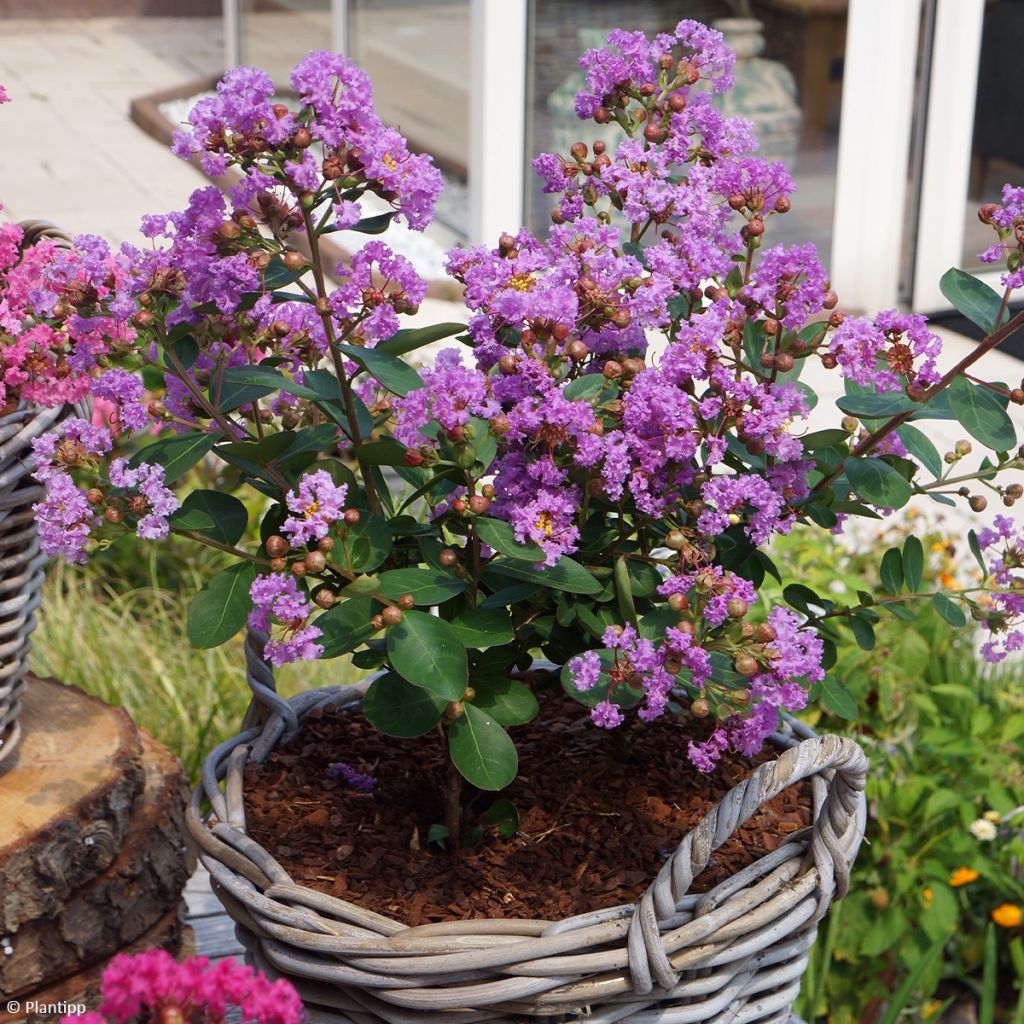

Lagerstroemia indica Eternal with Love - Crape Myrtle
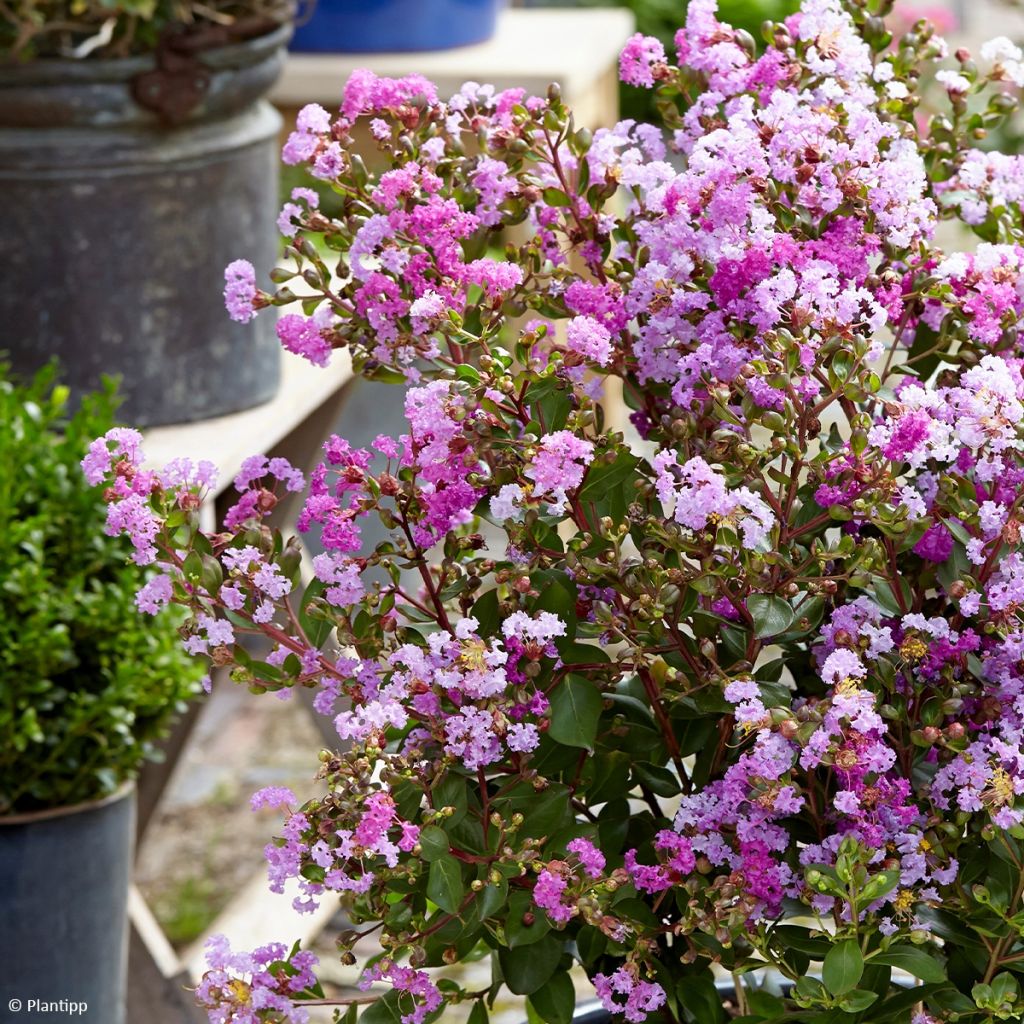

Lagerstroemia indica Eternal with Love - Crape Myrtle
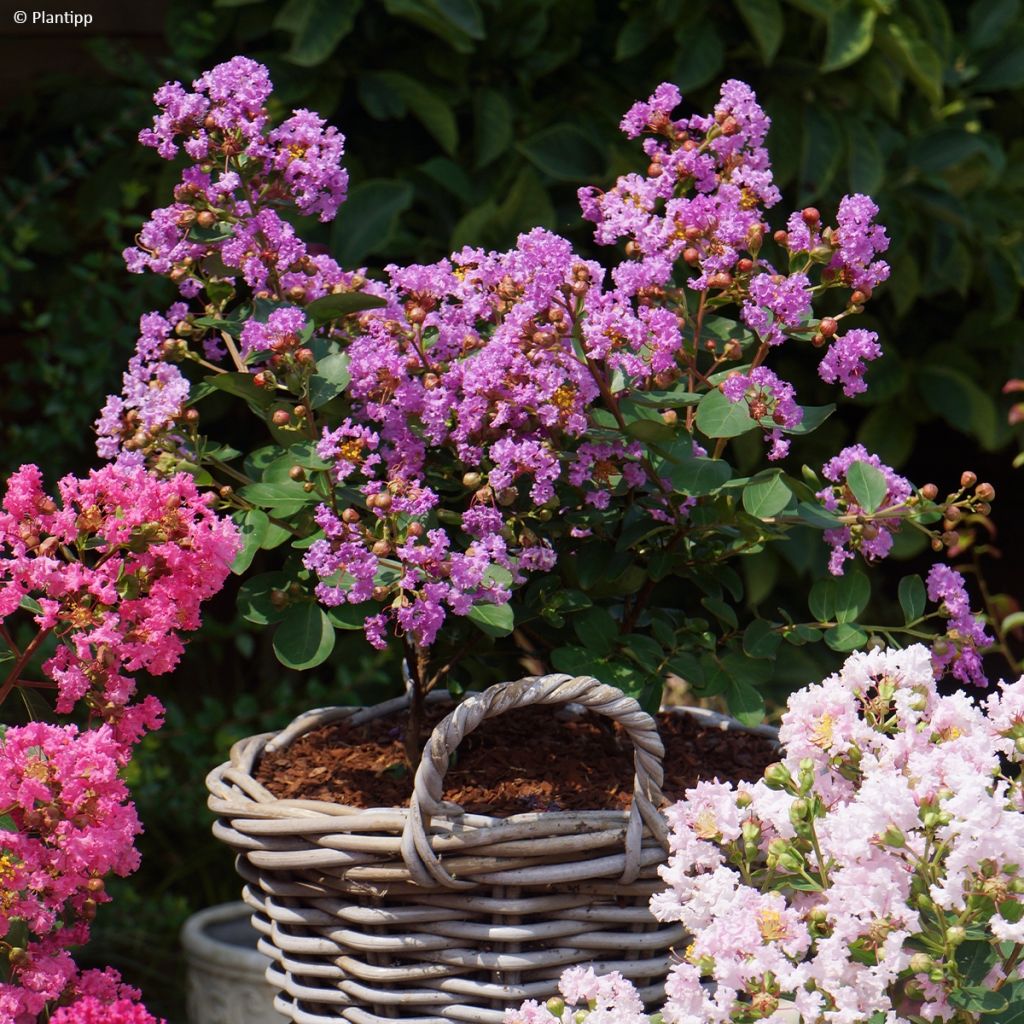

Lagerstroemia indica Eternal with Love - Crape Myrtle
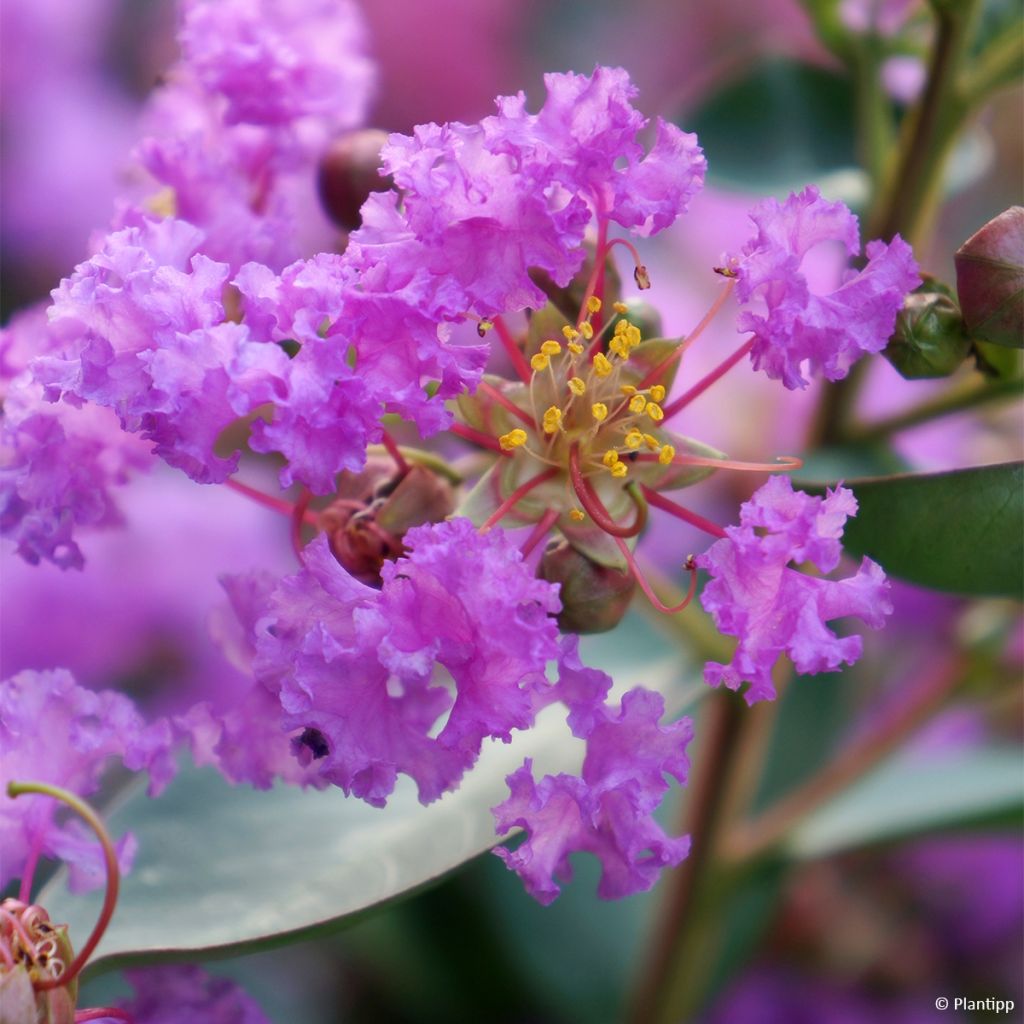

Lagerstroemia indica Eternal with Love - Crape Myrtle
Lagerstroemia indica Eternal with Love - Crape Myrtle
Lagerstroemia indica ETERNAL WITH LOVE® PBR
Crape Myrtle, Crepe Myrtle, Indian Lilac
Why not try an alternative variety in stock?
View all →This plant carries a 24 months recovery warranty
More information
We guarantee the quality of our plants for a full growing cycle, and will replace at our expense any plant that fails to recover under normal climatic and planting conditions.
From €5.90 for pickup delivery and €6.90 for home delivery
Express home delivery from €8.90.
Delivery to Corse prohibited: UE law prohibits the import of this plant from mainland France to Corse as part of the fight against Xylella fastidiosa. Please accept our sincere apologies.
More information
Does this plant fit my garden?
Set up your Plantfit profile →
Description
The Lagerstroemia indica Eternal With Love is a stunning variety of Indian Lilac with a compact habit. During the summer and into early autumn, it produces spectacular clusters of bright purple flowers, at a time when few other bushes can compete with it. Part of a range of summer Lilacs selected for their hardiness, this bush can also be grown in pots in the coldest regions. It has all the qualities for adorning small gardens and terraces and will thrive in full sun, in fertile, light, not too dry soil.
The Indian Lilac 'Eternal With Love' belongs to the small family of Lythraceae, known for also hosting the pomegranate (Punica granatum), of which there are flower and fruit species, as well as the Cuphea, some species of which are used as flowering perennials on the Mediterranean coast. These are indeed moderately to slightly hardy plants, the Lagerstroemia being one of the hardiest, as it can withstand down to -10 °C to -15 °C. However, it needs heat to flower, which limits its interest in northern regions, even if its bark becomes decorative over time, as the branches or trunk thicken. Indeed, if in a cool area, it is most often present as a bush, in the south, one can come across specimens formed as trees.
This cultivar 'Eternal With Love', also known as 'Milavio', is a variety of Indian Lilac that has been selected over several years, in Italy and then in Central France, according to various criteria, notably resistance to diseases and cold, as well as early and long flowering. This stretches for more than 2 months between July and October, the bush then displaying superb clusters of bright purple flowers. The rather airy inflorescences are composed of fine pedicels each bearing a flower with five very undulate petals, the texture of which recalls that of a crepe. Depending on their stage of development, the flowers are more or less dark and bright, which further enhances the beauty of the flowering. The foliage, leathery and deciduous, composed of small ovate leaves, is quite dark and glossy. It falls in autumn.
Like its peers in the With Love range ('Girl with Love', 'Babe with Love', 'Kiss with Love', 'Virgin with Love'), this small Lagerstroemia makes for beautiful flowering pots. Its natural compactness and annual pruning allow its growth to be limited to keep it in a pot for many years. It will then need to be watered regularly in summer and given a potash fertiliser in spring to promote its bright flowering.
Indian Lilacs are the glory of gardens in the South-West of France, with some local nurseries specialising in this plant. Preferring the humid and warm South Atlantic to the dry and windy Mediterranean, it nevertheless thrives on the French Riviera provided it is watered a little in summer. This bush also deserves to be acclimatised in the colder regions of our region, carefully choosing the variety - and 'Eternal With Love' is a good candidate for this - and its location. You can therefore plant it as a single specimen near the house to fully enjoy its long flowering, in the ground or in a decorative pot.
It will also be well highlighted in a mixed bed, mixed with spring-flowering plants to benefit from flowers throughout the season. Combine it with Forsythias whose golden yellow flowering will brighten up the days of March-April, as well as the Flowering Currant Ribes sanguineum King Edward VII whose bright pink clusters emerge at the same time. The classic and timeless Philadelphus coronarius will bridge the gap between these early bloomers and our little Lagerstroemia, with its beautiful pure white flowers with an unforgettable scent.
NB : Karl Von Linnaeus named this tree to pay tribute to his friend Magnus Von Lagestroem (1696 – 1759), who had sent it to him from India for identification. Originally, this tree was used to decorate Chinese temples. We would like to point out that this tree produces fruits that have a narcotic effect if ingested.
Report an error about the product description
Lagerstroemia indica Eternal with Love - Crape Myrtle in pictures
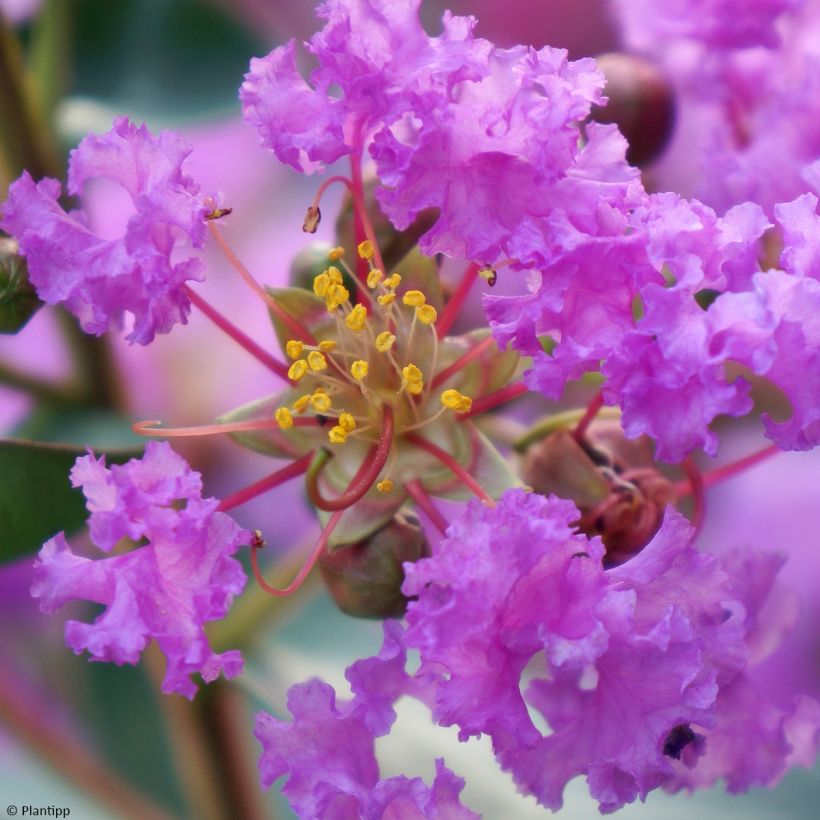

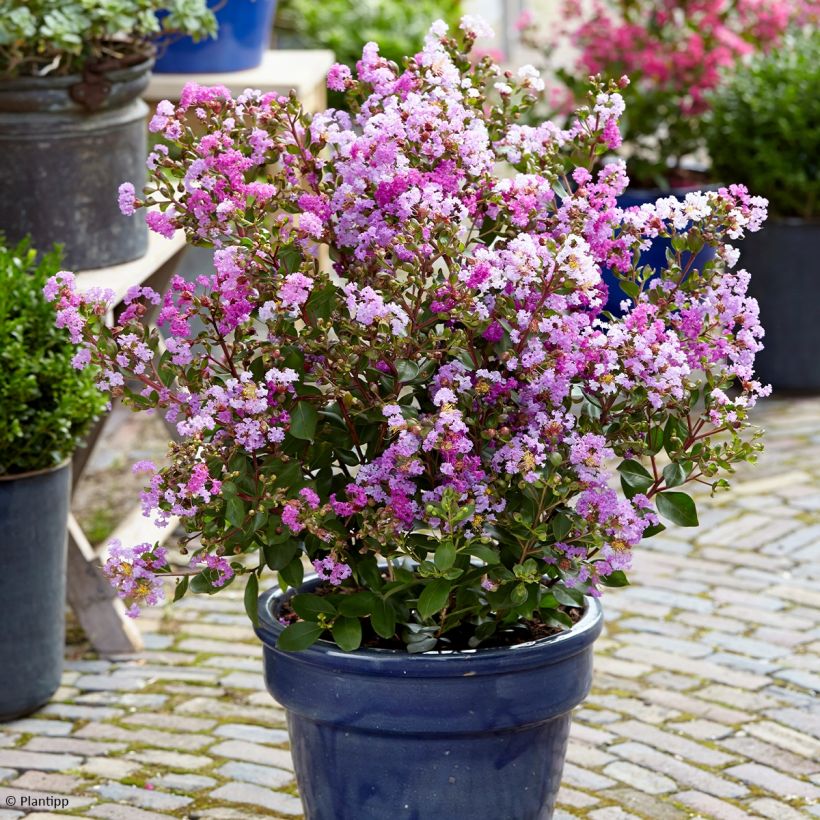

Plant habit
Flowering
Foliage
Botanical data
Lagerstroemia
indica
ETERNAL WITH LOVE® PBR
Lythraceae
Crape Myrtle, Crepe Myrtle, Indian Lilac
Cultivar or hybrid
Other Lagerstroemia - Crape Myrtle
Planting and care
We advise you to plant the Lagerstroemia indica 'Eternal Whith Love' in the spring, when frosts are no longer to be feared, in a very sunny and sheltered situation, in a rich soil, rather fresh, well drained and if possible slightly acidic, neutral or little limey. In the southern regions, on the other hand, it would be better to plant it in the autumn so that it can take advantage of the seasonal rains to root. It will appreciate a supply of compost and a thick layer of dead leaves, especially the first two winters in slightly cold regions. It is necessary to prune very short the flower-bearing branches in February-March, leaving only 4 to 6 buds to balance its branches and stimulate the growth of future flower-bearing branches. Also remove the weak twigs that will produce no flower and the poorly positioned branches.
Cultivation in a container or in a large pot is possible, even recommended in regions where frosts are severe and prolonged. This bush, however, still resists up to -15 °C at peak, once it is old enough and well established.
Planting period
Intended location
Care
This item has not been reviewed yet - be the first to leave a review about it.
Haven't found what you were looking for?
Hardiness is the lowest winter temperature a plant can endure without suffering serious damage or even dying. However, hardiness is affected by location (a sheltered area, such as a patio), protection (winter cover) and soil type (hardiness is improved by well-drained soil).

Photo Sharing Terms & Conditions
In order to encourage gardeners to interact and share their experiences, Promesse de fleurs offers various media enabling content to be uploaded onto its Site - in particular via the ‘Photo sharing’ module.
The User agrees to refrain from:
- Posting any content that is illegal, prejudicial, insulting, racist, inciteful to hatred, revisionist, contrary to public decency, that infringes on privacy or on the privacy rights of third parties, in particular the publicity rights of persons and goods, intellectual property rights, or the right to privacy.
- Submitting content on behalf of a third party;
- Impersonate the identity of a third party and/or publish any personal information about a third party;
In general, the User undertakes to refrain from any unethical behaviour.
All Content (in particular text, comments, files, images, photos, videos, creative works, etc.), which may be subject to property or intellectual property rights, image or other private rights, shall remain the property of the User, subject to the limited rights granted by the terms of the licence granted by Promesse de fleurs as stated below. Users are at liberty to publish or not to publish such Content on the Site, notably via the ‘Photo Sharing’ facility, and accept that this Content shall be made public and freely accessible, notably on the Internet.
Users further acknowledge, undertake to have ,and guarantee that they hold all necessary rights and permissions to publish such material on the Site, in particular with regard to the legislation in force pertaining to any privacy, property, intellectual property, image, or contractual rights, or rights of any other nature. By publishing such Content on the Site, Users acknowledge accepting full liability as publishers of the Content within the meaning of the law, and grant Promesse de fleurs, free of charge, an inclusive, worldwide licence for the said Content for the entire duration of its publication, including all reproduction, representation, up/downloading, displaying, performing, transmission, and storage rights.
Users also grant permission for their name to be linked to the Content and accept that this link may not always be made available.
By engaging in posting material, Users consent to their Content becoming automatically accessible on the Internet, in particular on other sites and/or blogs and/or web pages of the Promesse de fleurs site, including in particular social pages and the Promesse de fleurs catalogue.
Users may secure the removal of entrusted content free of charge by issuing a simple request via our contact form.
The flowering period indicated on our website applies to countries and regions located in USDA zone 8 (France, the United Kingdom, Ireland, the Netherlands, etc.)
It will vary according to where you live:
- In zones 9 to 10 (Italy, Spain, Greece, etc.), flowering will occur about 2 to 4 weeks earlier.
- In zones 6 to 7 (Germany, Poland, Slovenia, and lower mountainous regions), flowering will be delayed by 2 to 3 weeks.
- In zone 5 (Central Europe, Scandinavia), blooming will be delayed by 3 to 5 weeks.
In temperate climates, pruning of spring-flowering shrubs (forsythia, spireas, etc.) should be done just after flowering.
Pruning of summer-flowering shrubs (Indian Lilac, Perovskia, etc.) can be done in winter or spring.
In cold regions as well as with frost-sensitive plants, avoid pruning too early when severe frosts may still occur.
The planting period indicated on our website applies to countries and regions located in USDA zone 8 (France, United Kingdom, Ireland, Netherlands).
It will vary according to where you live:
- In Mediterranean zones (Marseille, Madrid, Milan, etc.), autumn and winter are the best planting periods.
- In continental zones (Strasbourg, Munich, Vienna, etc.), delay planting by 2 to 3 weeks in spring and bring it forward by 2 to 4 weeks in autumn.
- In mountainous regions (the Alps, Pyrenees, Carpathians, etc.), it is best to plant in late spring (May-June) or late summer (August-September).
The harvesting period indicated on our website applies to countries and regions in USDA zone 8 (France, England, Ireland, the Netherlands).
In colder areas (Scandinavia, Poland, Austria...) fruit and vegetable harvests are likely to be delayed by 3-4 weeks.
In warmer areas (Italy, Spain, Greece, etc.), harvesting will probably take place earlier, depending on weather conditions.
The sowing periods indicated on our website apply to countries and regions within USDA Zone 8 (France, UK, Ireland, Netherlands).
In colder areas (Scandinavia, Poland, Austria...), delay any outdoor sowing by 3-4 weeks, or sow under glass.
In warmer climes (Italy, Spain, Greece, etc.), bring outdoor sowing forward by a few weeks.

































